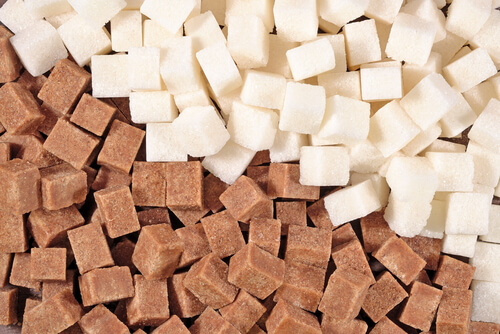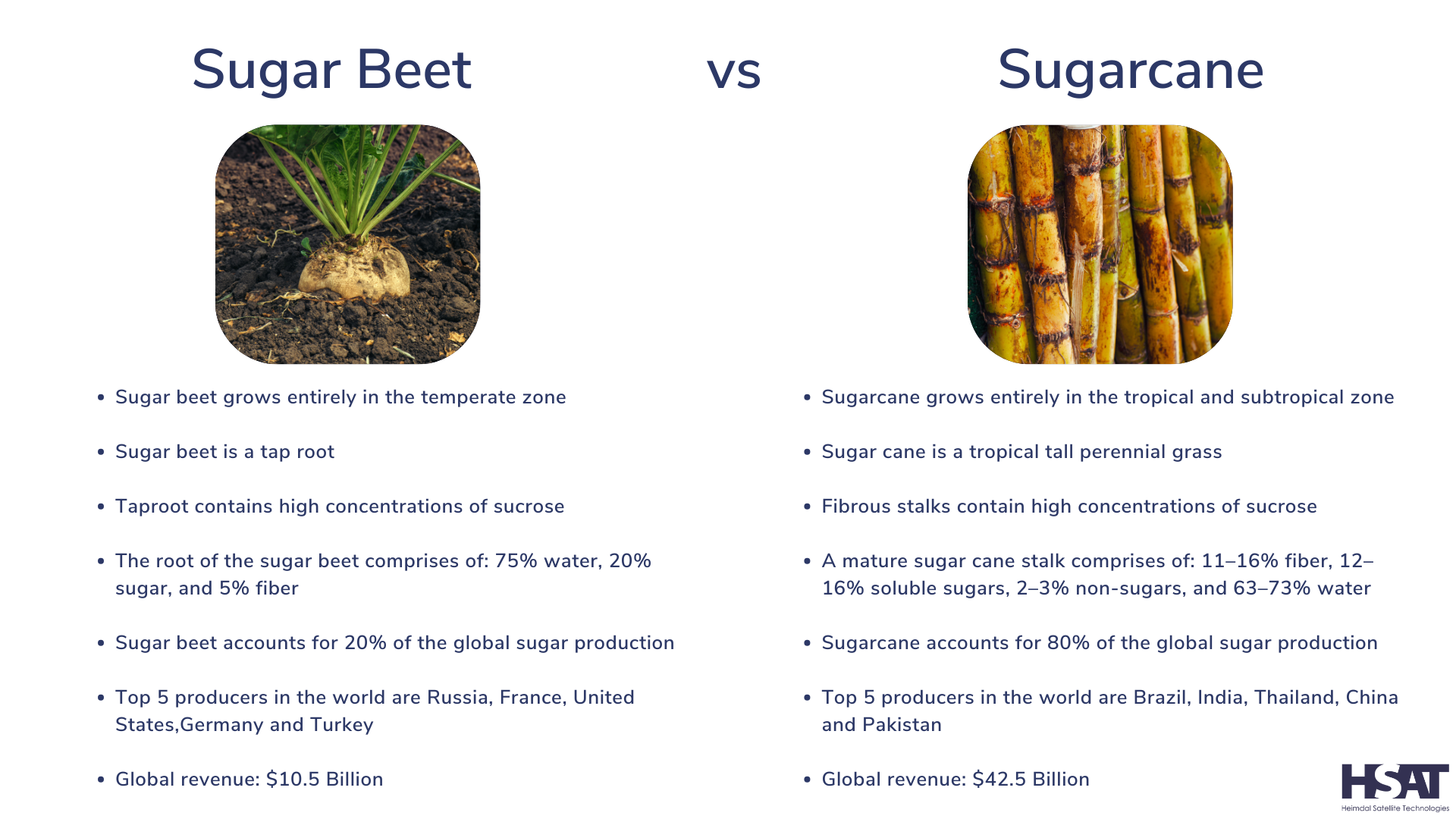Discover the Differences Between Beet Sugar vs Cane and Their Uses in Food
The Fantastic Debate: Beetroot Sugar Vs Walking Cane and Their Influence on Health And Wellness
The ongoing debate bordering beet sugar and cane sugar increases crucial concerns concerning their respective health and wellness influences and broader ramifications for customer choices. This conversation welcomes us to consider not just the sweet taste we pick, but the far-ranging effects of those options on our health and wellness and the earth.
Summary of Sugar Resources
Sugar, a commonly eaten sweetener, mainly stems from two primary resources: sugar beetroots and sugar cane. These plants are grown in various regions around the globe, each adding to the worldwide sugar supply in distinctive methods. Sugar walking cane grows in subtropical and exotic climates, with major manufacturers consisting of Brazil, India, and China. The plant is harvested for its stalks, which are after that refined to draw out juice and take shape sugar.
Conversely, sugar beets are predominantly grown in warm regions, with significant production in nations such as the USA, France, and Germany. The beetroots are collected from the ground, cut, and subjected to a process that converts the removed juice right into granulated sugar. While both sugar resources eventually yield sucrose, their farming practices, processing techniques, and geographical distributions vary considerably.
These differences can influence not just the environmental influence of sugar manufacturing yet also the financial aspects of sugar rates and trade. Understanding the origins of these sugar is critical for policymakers and customers alike, as it lays the structure for educated discussions concerning their health and wellness effects and sustainability.
Nutritional Comparison
When analyzing the nutritional accounts of beet sugar and walking cane sugar, both resources share a comparable composition as they mostly include sucrose. Sucrose is a disaccharide, made up of sugar and fructose, and is in charge of the sweet taste connected with both sugars. The refining procedures for both beet and walking stick sugar yield products that are mainly pure sucrose, with minimal traces of vitamins, minerals, or other nutrients.
In regards to calorie material, both beet and walking stick sugars provide around 4 calories per gram. Neither sort of sugar supplies significant dietary benefits beyond power stipulation, as they do not have important vitamins or minerals. The visibility of trace components, such as potassium, magnesium, and calcium, can differ a little in between the 2, mostly due to the farming techniques and dirt conditions in which they are grown.
In addition, the glycemic index values of beet sugar and walking stick sugar are similar, suggesting similar impacts on blood sugar degrees. Overall, from a nutritional perspective, beetroot and walking stick sugars are functionally comparable, contributing mainly to caloric intake without offering considerable health and wellness advantages over each other.
Health Effects
The health and wellness ramifications of consuming beet sugar and cane sugar warrant careful factor to consider, particularly offered the climbing occurrence of sugar-related health and wellness problems. Both kinds of sugar contribute similar calorie values and can result in increased dangers of obesity, kind 2 diabetic issues, and heart diseases when consumed in unwanted. The body sugars both metabolizes right into glucose, which can cause spikes in blood sugar degrees, causing insulin resistance gradually.
While there is ongoing discussion regarding the glycemic index of these sugars, researches suggest that both can adversely affect metabolic health if consumed in big amounts. beet sugar vs cane. Furthermore, the potential visibility of contaminants in beet sugar, such as chemicals from traditional farming practices, elevates more wellness worries. Conversely, walking cane sugar, especially when minimally refined, might offer a somewhat much more favorable profile due to its all-natural state
Furthermore, the usage of included sugars, despite the resource, is connected to adverse health and wellness end results, including oral concerns and fatty liver disease. Small amounts is crucial, and people ought to be mindful of their complete sugar consumption from all sources, ultimately focusing on entire foods over added sugars for optimal health and wellness outcomes.
Ecological Impact
Comprehending the wellness implications of beetroot and cane sugar additionally causes an examination of their environmental influence, which can considerably affect agricultural sustainability and ecological balance. Both sugar resources have unique environmental impacts, formed by their growing practices and geographical demands.

On the other hand, beet sugar is normally grown in temperate environments and often includes diverse crop rotations. This technique can boost dirt health and wellness and minimize dependence on chemical inputs. Nevertheless, intensive beet farming can also cause nutrition deficiency and parasite stress otherwise handled sustainably.
Both sugar types present difficulties and opportunities for ecological stewardship. Promoting sustainable agricultural techniques and liable sourcing can alleviate their impacts, making certain that sugar manufacturing lines up with ecological preservation and lasting food security.
Customer Preferences
Amid growing awareness of wellness and environmental problems, customer preferences for sugar types are progressively affected by understandings of hop over to these guys wellness advantages, sustainability, and moral sourcing. Beetroot sugar and walking cane sugar each present unique attributes that appeal to different customer demographics.
Health-conscious customers frequently look at the nutritional accounts of these sugars, seeking options regarded as much less refined or even more all-natural. Walking cane sugar, commonly considered as the traditional sugar, is sometimes favored for its regarded pureness and simplicity. On the other hand, beetroot sugar, which is regularly originated from genetically modified crops, faces skepticism among those concerned concerning GMOs.
Sustainability is one more significant variable affecting customer selections. As awareness of agricultural techniques expands, lots of consumers select items that align with eco pleasant farming methods. Walking cane sugar production, specifically when sourced from lasting ranches, can interest eco-conscious purchasers.
Moral sourcing plays an essential function also, with consumers progressively favoring items that sustain fair labor practices. Accreditations such as Fair Trade can improve the appearance of cane sugar in the market. Ultimately, customer choices are shaped by a complex interaction of health, environmental, and ethical considerations, driving demand for both beet and walking cane sugars in varied markets.
Conclusion
To conclude, the discussion in between beet sugar and walking stick sugar incorporates numerous variables, consisting of dietary accounts, wellness ramifications, and environmental effects. beet sugar vs cane. While both sugars mostly consist of sucrose and display comparable calorie material, worries regarding pesticide usage in beetroot sugar and the ecological effect of cane sugar monoculture warrant mindful consideration. As customers increasingly focus on sustainability and health, informed selections pertaining to sugar consumption become necessary in advertising overall health and ecological stewardship
